By Rick VanSickle
Niagara grape grower Kevin Watson takes a moment to collect his thoughts on the disaster that was the fall of 2021 and winter of 2022 in Ontario. “It’s not good at all. It’s bad for our industry.”
The relentless rain in September was the immediate problem for much of the 2021 crop, but a far greater concern has emerged for the 2022 crop in the wake of the wet weather during harvest and the freezing temperatures later in the winter. By the time spring and flowering of the buds occurred, growers noticed swaths of unhealthy vines in the vineyard. And sadly, it has amounted to widespread crop loss across the entire Niagara region that will have a devastating financial impact on wineries, especially for the smaller businesses, virtual wineries and those who rely on growers for all or some of their grapes. There just won’t be enough to go around.
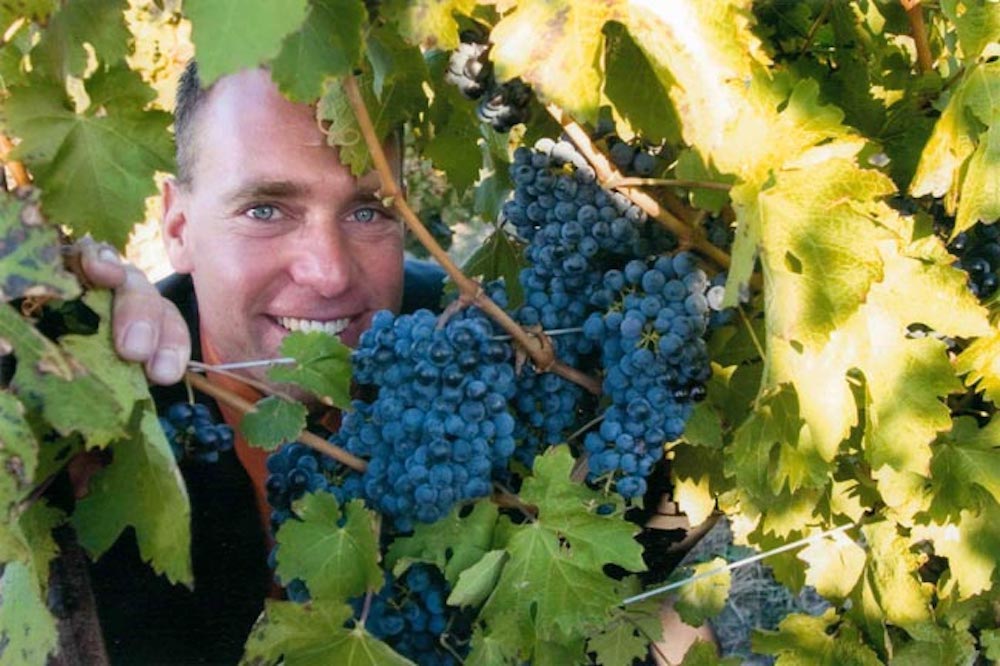
Watson, above, pegs the loss of crop in Niagara to half of what a normal vintage will produce. Some growers and wineries fared worse than others. Chair of the Grape Growers of Ontario, Matthias Oppenlaender, agrees with that estimate: “I anticipate the crop to be down to probably half of a normal year,” he told Wines In Niagara. “We are trying to get a handle on it, as we are talking. There are also vineyards that are being removed.”
Just drive around the main grape-growing areas of Niagara and you can see for yourself the vineyards that were hit the hardest. Many are simply gone while others will not even produce one grape from the 2022 vintage.
Watson, whose family owns and operates K J Watson Farms on Line 2 in Niagara-on-the-Lake and farms 100 acres of multiple grape varieties, has never seen anything like what happened to the vines over the winter and spring of 2022. It wasn’t like the winter damage years of 2014-2015 or even 2003 and 2005, he said. “The issues came from the rain last fall.”
Because growers needed to hang the water-logged, “juiced up crop” long enough to get the sugar levels (brix) needed to make VQA wine, it led to a heavier crop with the roots sitting in the water. “They went into winter not as hardy as they should have been,” he explained. “The vines were just weaker.”
Watson, named Grape King in 2007-2008, estimated that over-wintering vines from 2021 were up to 5 degrees less hardy. While buds can normally withstand temperatures to around -23 C, grapes from 2022 were being compromised at -18 C, according to VineAlert, a Brock CCOVI system for measuring bud hardiness.
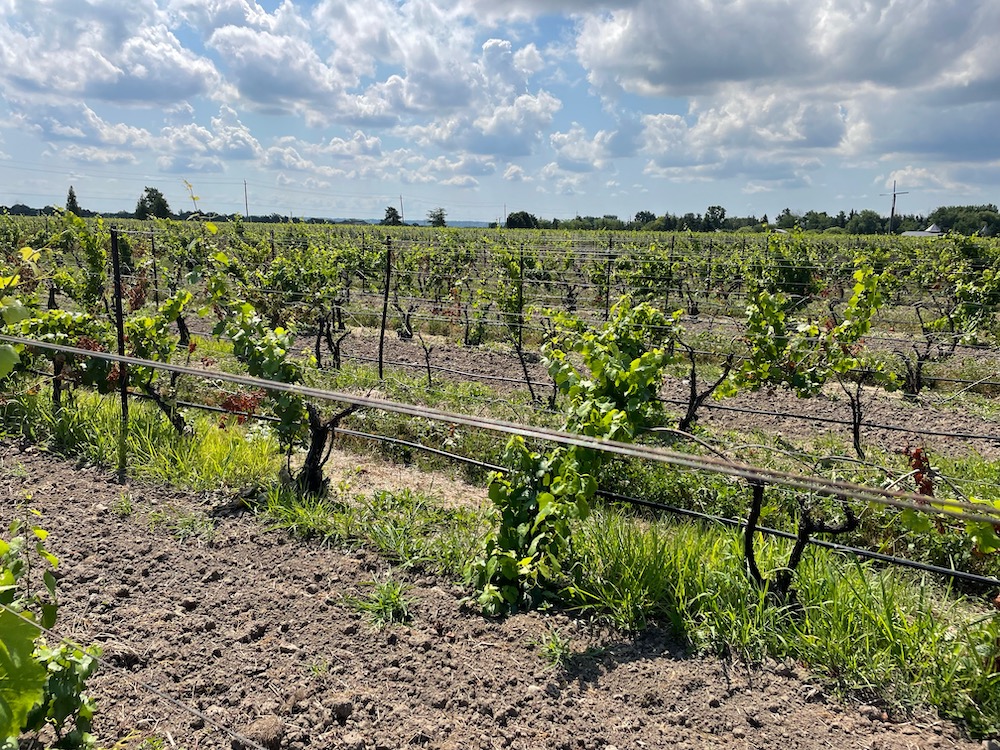
Watson said the two months of rain last fall laid the groundwork for the looming disaster. The rain caused the crop to be late. “This was because the rains diluted the flavours and we had to wait to allow the sugars to come back up. Also, when it is raining the sun is elsewhere and the buds need the sun to harden off and prepare for winter.”
He said the vines had added extra stress with the delayed harvest as well as little exposure to the sun and that resulted in a nearly 5 C drop in winter hardiness. “We then saw a few nights of -20/21 and unbeknownst to us, damage occurred. I was cutting buds in March to determine how many buds to leave, and we were very optimistic. There were some reports of damage in the area, but I remember thinking that maybe we were spared.”
That optimism turned out to be all for naught. “I was wrong, and we sustained huge damage.” While Watson said that next year the surviving vines have the potential to be back at 100%, he did lose an 8-acre block of Chardonnay and damage to mostly Merlot, Sauvignon Blanc, Riesling, and Pinot Gris blocks. “We had a good many years of very little winter damage and it’s always in the back of your mind. Fingers crossed that we don’t have another for a while. We’re all better when we grow more grapes. And we make such great wine here in Ontario.”
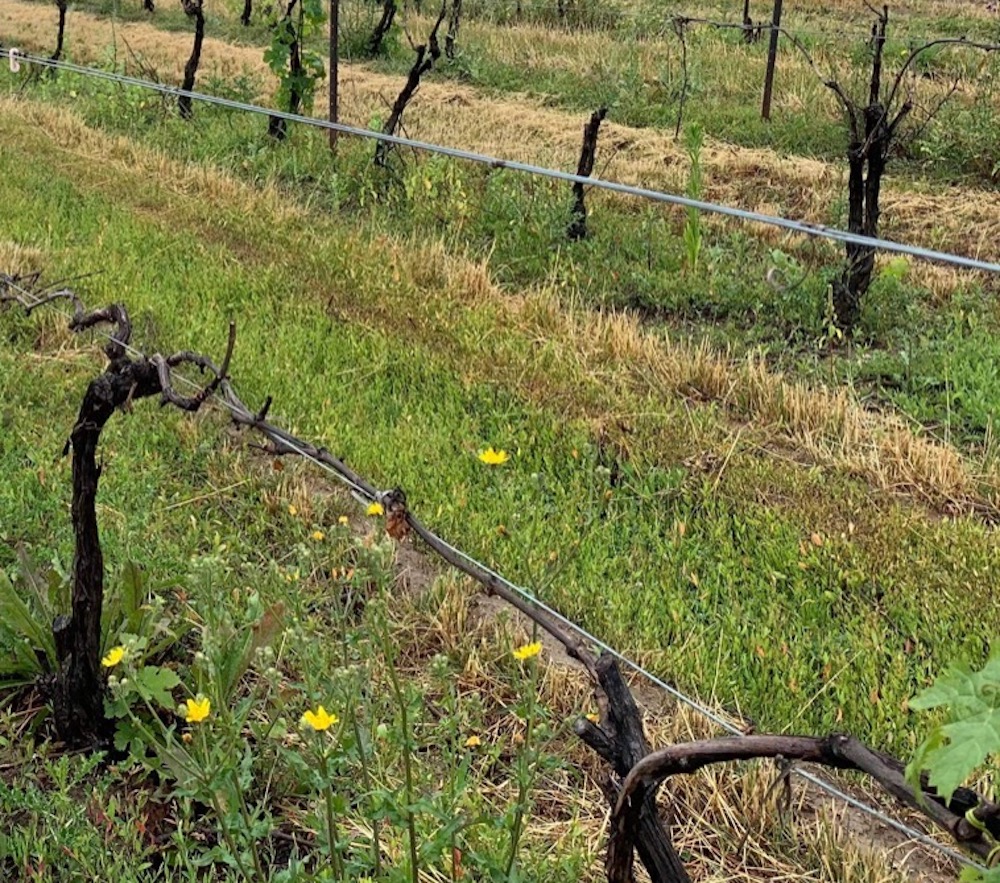
Watson said his farm, with the help of crop insurance that covers up to 80% of the loss, will come out of this just fine. But for this harvest, not only will the crop be drastically reduced, but he is also going to have to farm at lower tonnage, anywhere from a half a tonne to an acre to a tonne an acre.
“The small guy producing good wine will have a hard time,” said Watson, noting the larger wineries such as Arterra Wines Canada and Peller, because of their large grape contracts, are always first in line for the grapes. The smaller wineries fall in somewhere behind them.
He noted that the worst hit varieties at his farm were both the Merlot and Sauvignon Blanc while the Cabernets, Chardonnay, Riesling, and hybrids were less impacted.
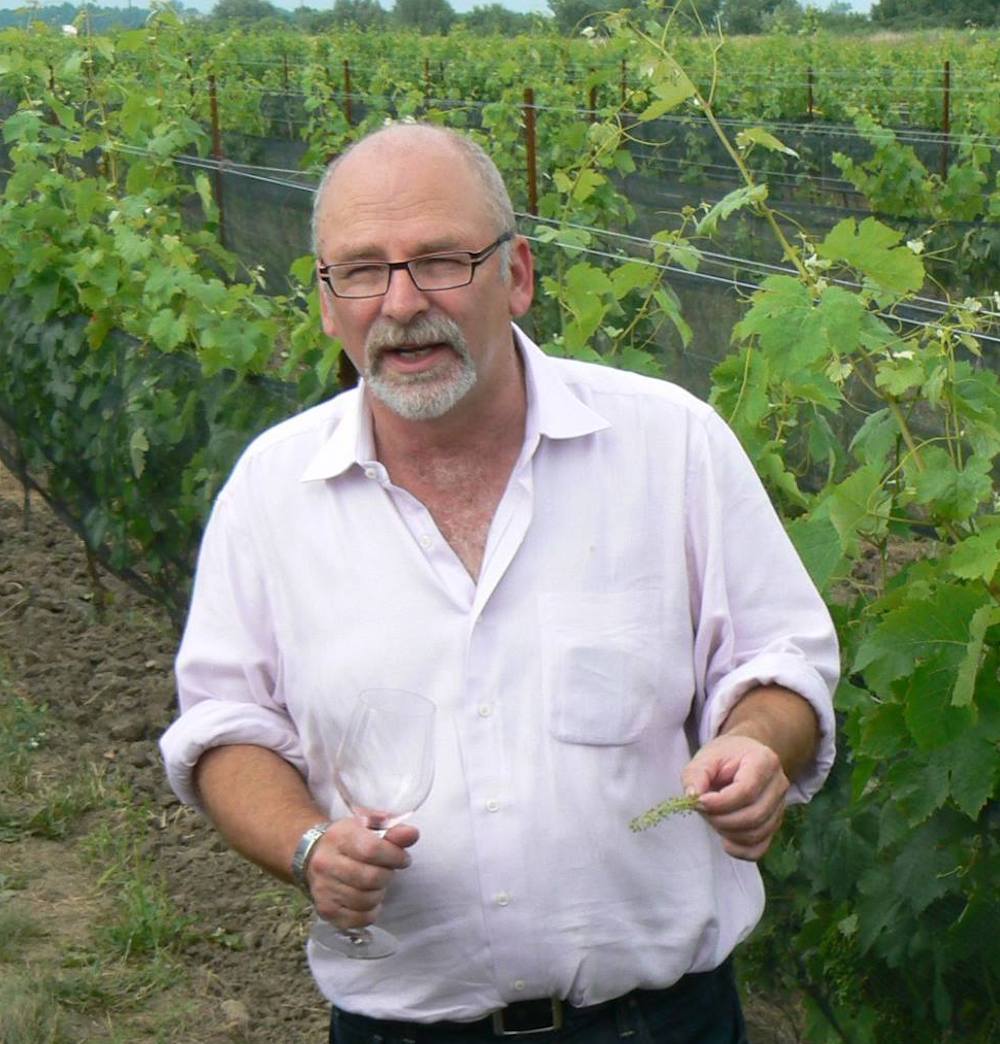
Southbrook Organic Vineyards owner, Bill Redelmeier (above), who pens an informative industry newsletter for his subscribers every month, was one of the first in Niagara to discuss the crop loss.
He had reported in an earlier newsletter this spring that Southbrook had survived the winter that hit -24.8 C at the winery, a devasting temperature for bud survival, which leads to loss of vines. Damage can occur at below -20 C in Niagara, and quite likely at -24 C.
In an updated newsletter, Redelmeier wrote: “A few weeks ago, I wrote that we had survived the winter, except for a small block of Merlot. We had checked all the vines, and they seemed to be mostly alive, and we had high hopes for a reduced, but mostly normal, crop. As the spring starts to turn to summer, a different story is being told. We think that we will have lost about 75% of our crop for this year.”
Plants, including grapevines, have evolved over millions of years to maximize survival, explained Redelmeier. “The vine does this in many ways, but especially by having multiple buds. The primary bud is there to send out a shoot with multiple nodes, each with leaf and flower buds. The bud at the tip (the apex, or the apical bud) sends out hormones that tell all of the spare buds that all is well, and to stay dormant. This is called apical dominance. If the apical bud dies, those hormones disappear, and the dormant buds start to grow, but usually a couple of weeks later than usual. If you are in a warm climate, those secondary buds will produce a reduced, but serviceable crop. In a climate like Canada’s, however, the crop will rarely ripen enough to give us a quality crop and the harvest date will be so late that it puts the health of the vine in jeopardy. In order to save the vine, and if the secondary buds are fine, we will go through the vineyard and remove the flowers so the plant can focus on healing itself. We lose this year’s crop, but the vines will be healthy for a full crop next year.”
Below is a good example of a Southbrook vine that needs time to recover (photos by Bill Redelmeier). Buds are removed to reduce stress on the plant.
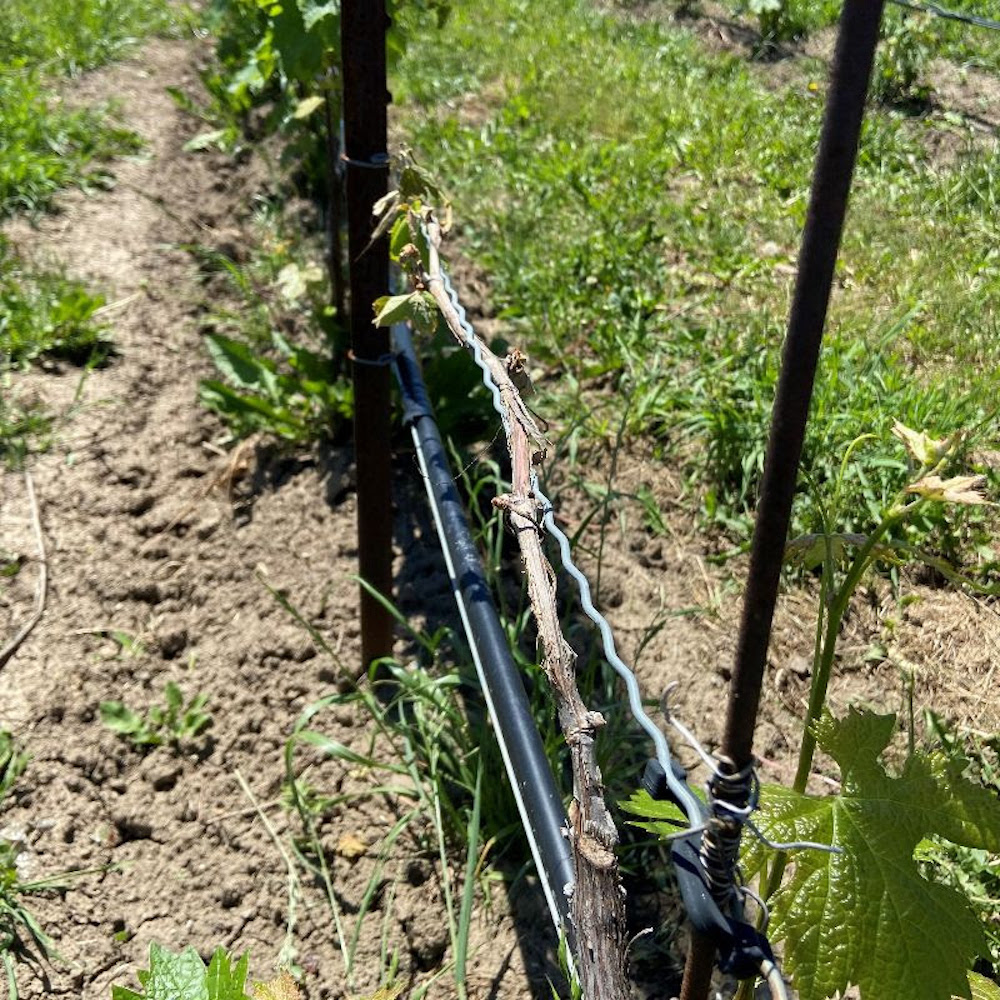
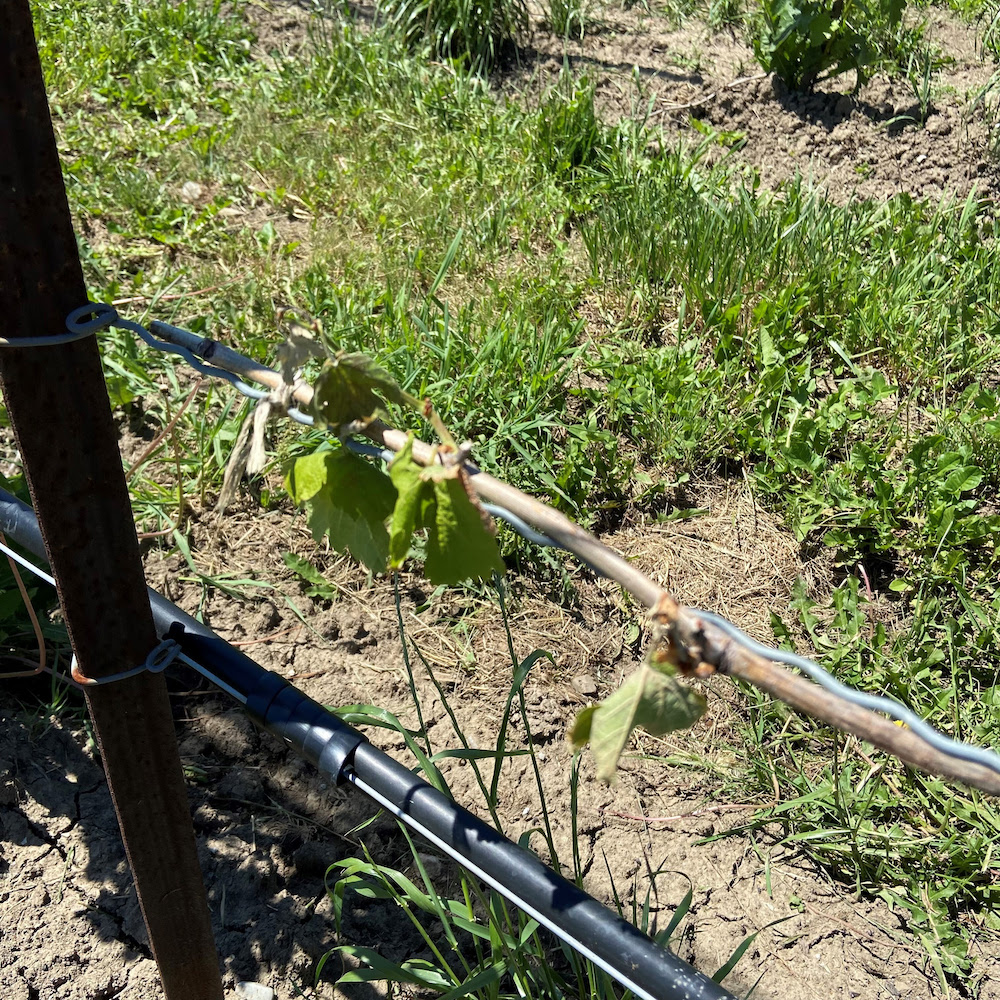
Redelmeier explained that if the weather is too cold for secondary buds to survive, the vine will send outside shoots, called suckers. Normally, those are removed by hand, or sometimes by sheep at his farm. “If the vine is healthy all they do is take energy from the vine but, if the trunk is damaged, we will have to keep the sucker and use it to make a new trunk,” he said. If the vine fails to send up any suckers, or if the suckers that do come up are from below the graft (almost all grapevines in Canada are grafted), it is too late, and the vine must be removed and replaced. At that point, you have lost about five years of production.
Below, suckers coming up from the base of the vine. Redelmeier can tell by leaf shape if this is coming from the rootstock or not. The other picture shows a split trunk — damage from the cold.
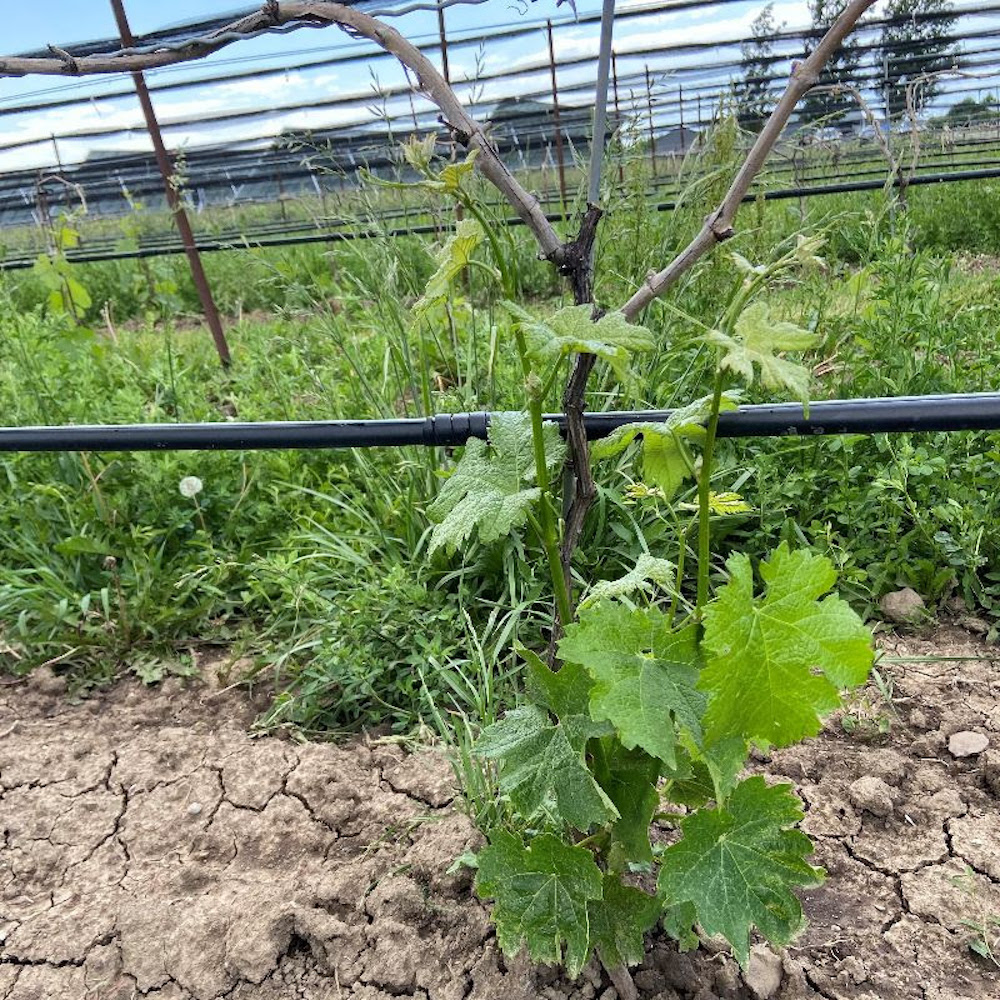
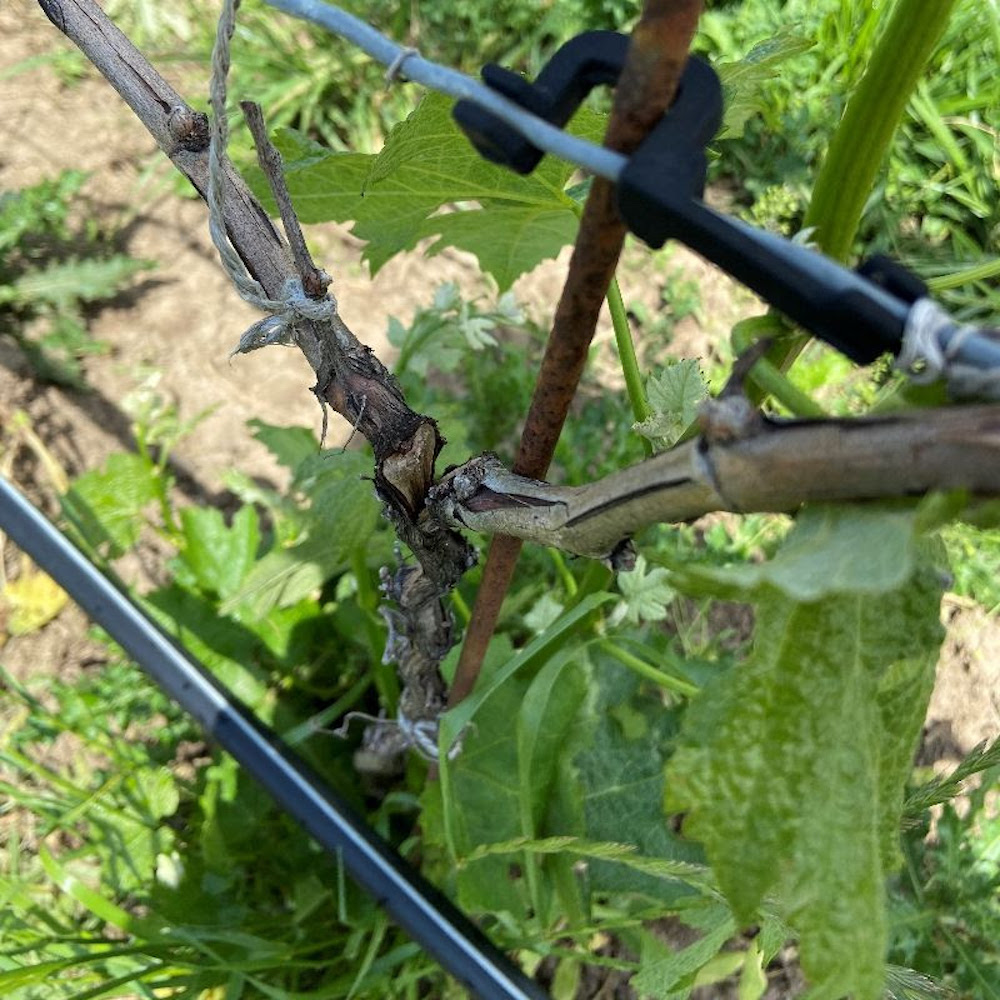
Redelmeier made a short video to help to explain what’s happening in the vineyard. You can view it here.
And if you’d like to know what healthy vines should look like, watch here.
Redelmeier laments the fact that there has been too little discussion about the winter damage across Niagara. “This surprises me. As you drive around you will see the impacts and in a lot of places it’s far worse than what we are dealing with,” he wrote in his latest newsletter. “At Southbrook, we have lost a lot of this year’s production, but we have been able to bring up new trunks, so the impact on future yield won’t be too major, we hope. I am seeing lots of vineyards with little to no greenery, and many that have already been torn out.”
Like many in Niagara right now, Redelmeier is concerned for the growers in the region. “The growers all get their cheques on Nov. 15,” he said. “Especially for small growers, the lack of a payday is so disastrous. I wonder why there isn’t more attention being paid — it might lead to the kind of government help they get in other winegrowing regions of the world.”
What can you do?
Redelmeier has a few thoughts on what you can do as a consumer and supporter of Ontario wines. “Spare a thought for the growers. After a huge crop last year, where many growers had no place to sell their bumper crop, this year they may have no crop to sell. As a winery, we have some flexibility, as we can sell multiple vintages at the same time, and as a consumer you can cellar wines to tide you over, but all of a grower’s grapes are picked and sold in the same year, and no grapes (means) no income. Some growers will have crop insurance, but as anyone who has tried to replace a car after an accident, that won’t cover all the expenses. Please support Niagara VQA wines, from the LCBO and direct from the wineries. If this had happened in Europe or the US, we would have been hearing about government support already, but I am not holding my breath …”
A note to consumers: The quality of the 2022 vintage in Niagara will only be impacted by the growing season and will have nothing to do with a short crop. The season is off to a good start with dry, warm weather, but as any farmer will tell you, it’s what happens between Labour Day and Halloween that matters most for those grapes.
A view from Prince Edward County

Wines In Niagara reached out to Dan Sullivan (above), co-owner and winemaker at one of Prince Edward County’s original wineries, Rosehall Run Vineyards. He said that the vines at his 150-acre property in Wellington fared well through last winter. “Right now, our crop size looks very near normal. This is good news as we had been in a recent cycle of long crops followed by short ones from 2017-21 with the odd years being heavy and even years light, at least at RRV (Rosehall Run Vineyard).
Sullivan said they experienced a severe late November freeze in 2019 that killed some of their unburied vines (about 4-5%), hence overall tonnage will be slightly affected by that.
“Over the years it has become apparent that PEC is definitely drier than Niagara on the whole,” he said. “This was absolutely true last year as one of the pivotal points of the growing season — for us at least — occurred from Oct. 3-8 when Southern Ontario was deluged. While it poured down in Niagara for much of the week, the only serious rain episode here occurred overnight on Oct. 3 and into Monday Oct. 4 after which it stopped and stayed much drier for that week, allowing us to get the Pinot off in good shape and without the Chard becoming bloated with water.”
Later in the season, he said, the weather pattern deteriorated due to excessive moisture and the later picks of fruit were affected.
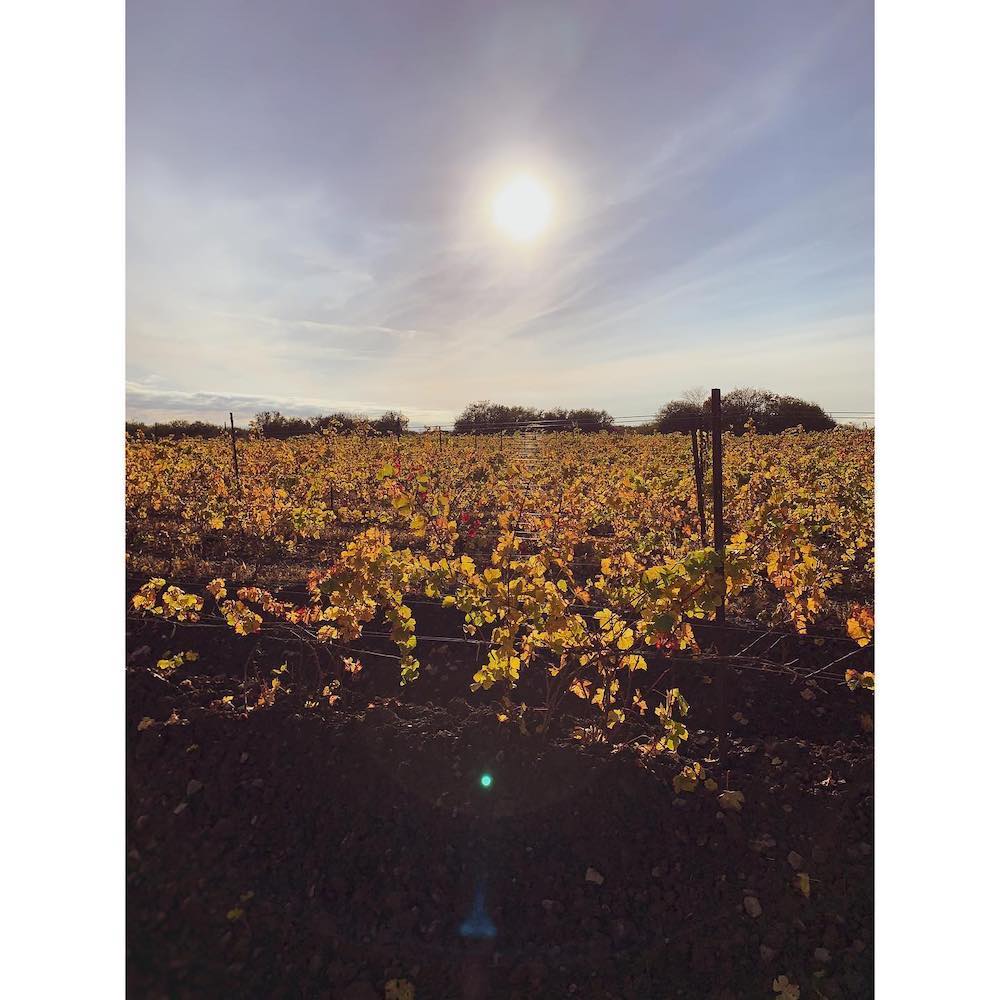
“I was concerned that the late season rain might negatively affect the hardening off and risk of rot under the soil, but this is not the case generally. Overall, barring unforeseen events, I expect our farm to produce reasonably well in 22.”
The lack of grapes available in Niagara in 2022 is more a concern for Sullivan, who relies on key Niagara vineyard sites for part of his production. “Clearly, the damage to vineyards in Niagara is going to have a widespread affect across our industry as we are a community that buys and sells grapes,” he said. “Some wineries (in PEC) stick to using exclusively estate grown fruit. This model works for relatively small production volumes but becomes more challenging as case volumes of a particular wine increase. Thus, I expect the shortage will most and least affect those who use this model and have been hard hit by the cold or escaped its wrath.
“Conversely, in the higher volume segment of the VQA market, there will likely be shortages that will cause disruption across the industry as we do buy and sell grapes to fulfil consumer demand for various wines. Many wineries have been trying to build inventory cushions to offset these events. Throw in a global supply chain/logistics disruption and inflation the likes of which we haven’t seen in 40 years, and it makes any prognostication difficult.”
Sullivan added, that “at this point, anecdotally, I have heard that some varietals have been impacted more severely than others. A crop loss is one thing, a vineyard loss is another matter entirely, we shall see.
“Generational cataclysmic weather events are better understood by wine regions and countries that have weathered more of them,” he said. “Unfortunately, it seems they are becoming more common. In my view, domestic public perception is generally more sympathetic to farmers in California, France, or Australia than in Canada when tragedy strikes.”


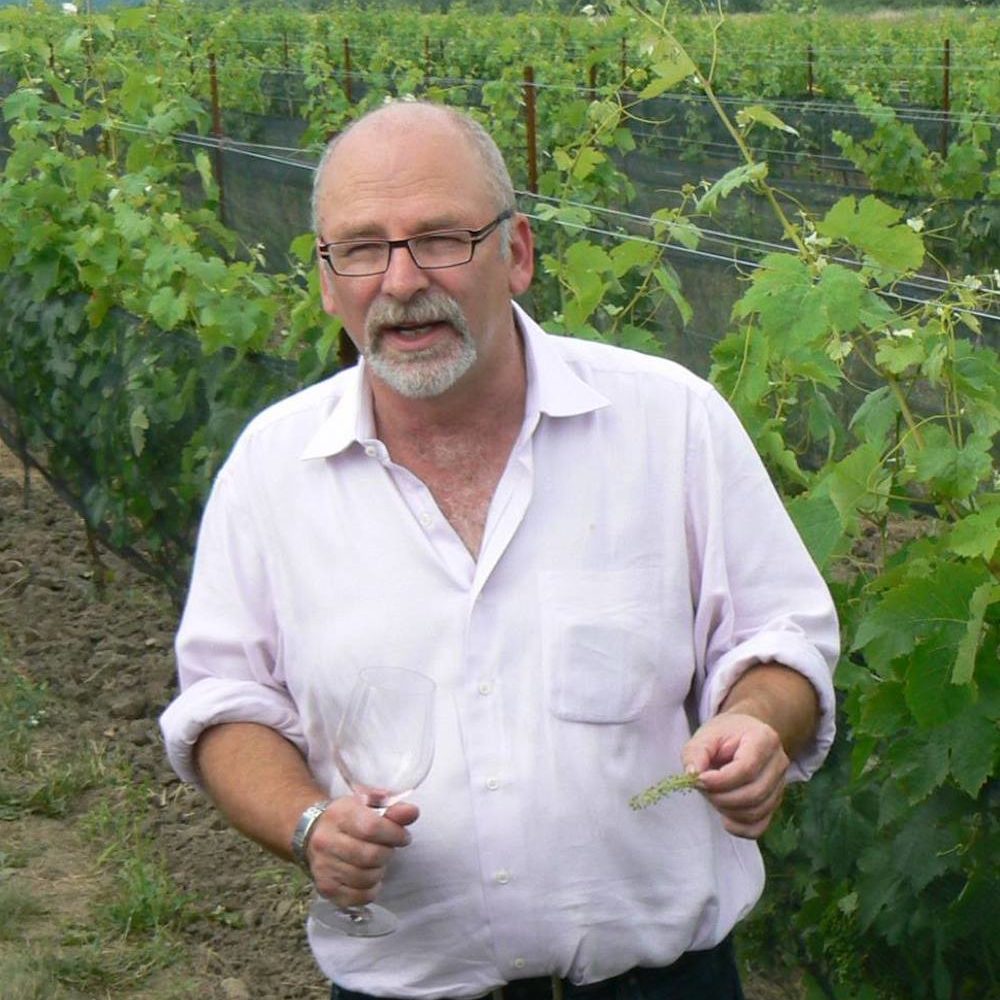






Comment here